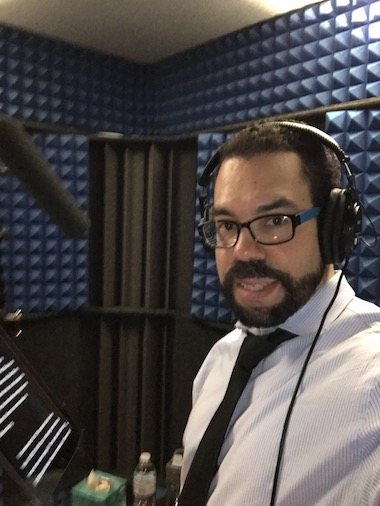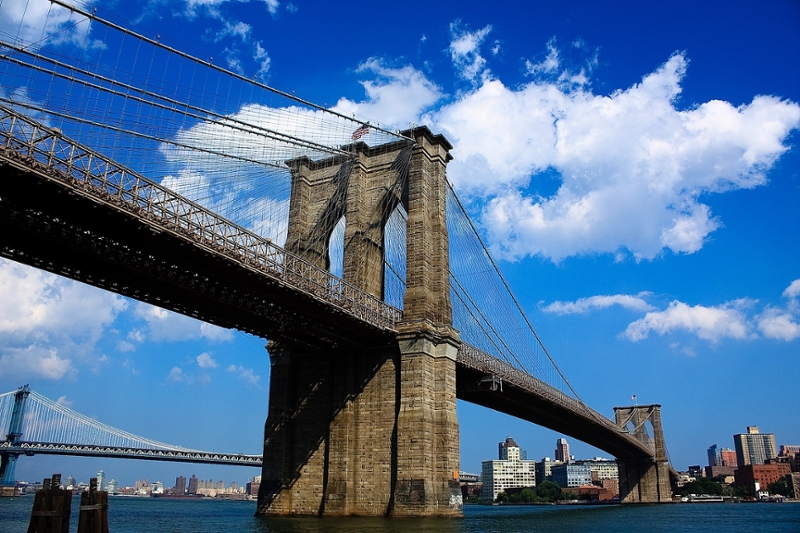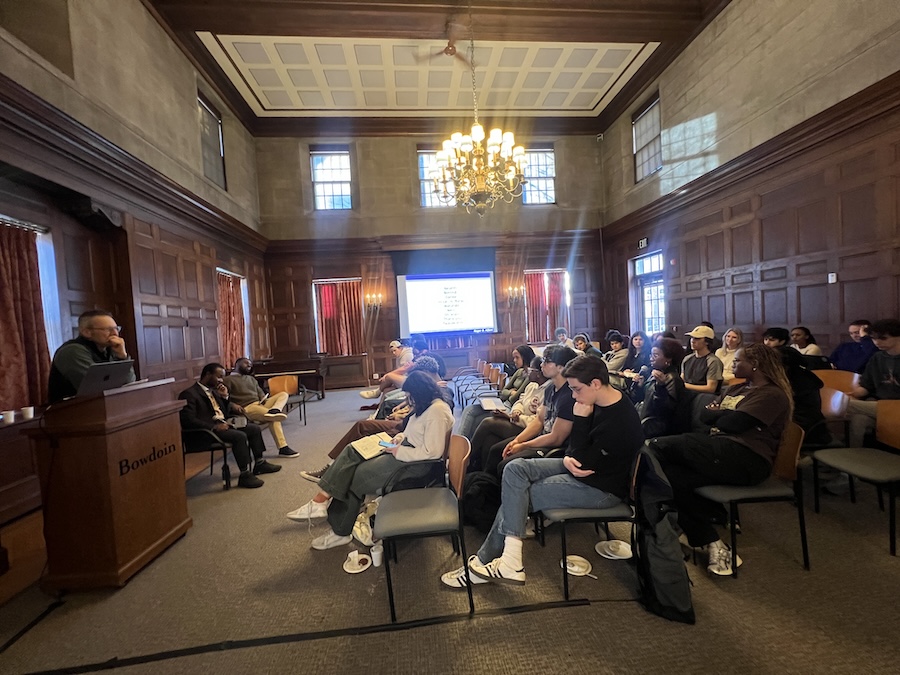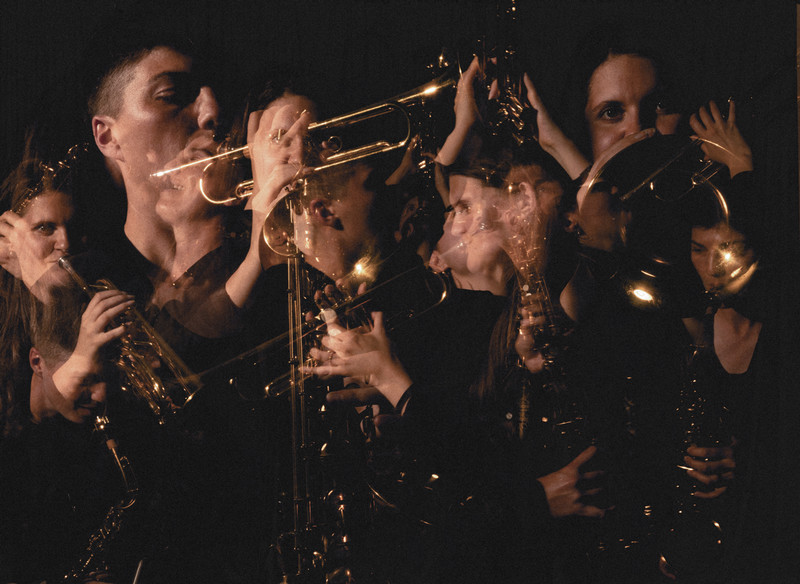Bowdoin’s Purnell Completes Audio Project on History of Brooklyn
By Tom PorterOf New York City’s five boroughs, Brooklyn has had arguably an underappreciated but significant historical impact, said Geoffrey Canada Associate Professor of Africana Studies and History Brian Purnell (and he’s not just saying that because he’s from there!)

“Brooklyn is so interesting because it’s a window through which you can view the growth of the nation.”
Purnell, a Brooklyn native who grew up in Coney Island, focuses much of his scholarship on the urban African American experience. In recent weeks he’s been stepping out of the classroom and into the recording booth to record an eleven-part series of lectures about the history of Brooklyn.
The result is a seven-hour audiobook that has recently been published on Amazon’s Audible platform. “I had a lot of fun doing this project, which I researched and wrote over a little over a year, and recorded over two days,” said Purnell. “It’s aimed at curious learners of all ages, but we’re especially keen to get it into the hands of schoolteachers.”
The History of Brooklyn is a comprehensive exploration of New York City’s most populous borough—at 2.7 million people, Brooklyn is bigger than Chicago—and the second largest in terms of acreage at around seventy square miles. Purnell’s lectures reach back to the Ice Age to explain the topography of the region and continue up to the present day.
“All but one of these lectures were written especially for this project, and the bulk of them deal with Brooklyn since colonial times,” he explained. “The eleven lectures address three main themes: people and culture, economic development, and social changes. While it’s had this identity of being in the shadow of Manhattan’s towering skyscrapers, Brooklyn has historically been perfectly situated to play a central role in the development of the metropolis.”


Situated at the western end of Long Island, just across the East River from Manhattan, Brooklyn has always been among the first points of contact for ships arriving in New York from Europe and has been able to supply the infrastructure in terms of transportation links, manufacturing, and human resources required to enable Manhattan to grow as it has.
Part of the story up through the end of the nineteenth century, said Purnell, is Brooklyn’s simultaneous role as hosting urban, suburban, and agricultural communities. “Long Island boasts a strong farming sector and was traditionally regarded as the breadbasket of the region.” Consequently, much of the food for this growing city would come through Brooklyn, he explained.
Brooklyn Heights also provided Manhattan with some of its first commuter suburbs. And Brooklyn’s ferry district was the epicenter of a bustling, humming city. “So, in a number of ways, going back to the 1600s, Brooklyn has always been the engine that powers the larger city, more so than any other borough outside Manhattan.”
Brooklyn has always been among the first points of contact for ships arriving in New York from Europe and has been able to supply the infrastructure in terms of transportation links, manufacturing, and human resources required to enable Manhattan to grow as it has.
In the twenty-first century, its industrial base is much smaller than it was, but Brooklyn remains a vibrant, multicultural hub of activity, whether as a template for the gentrification process, which has seen the repurposing of former industrial spaces, or as a center for economic diversity and high-tech industry, said Purnell.
“The bottom line is that Brooklyn will always be important because of its location, its transportation links, and most importantly its people. Throughout history it’s been the gateway to the nation for millions of Americans, and in 2022 Brooklyn is still a magnet for newcomers to the US, somewhere where the incredible diversity of America is on display.”
In the fall 2022 semester Brian Purnell will be teaching Gotham: The History of a Modern City (URBS 1321/HIST 1321), an examination of how New York became one of the preeminent modern cities in the world.



